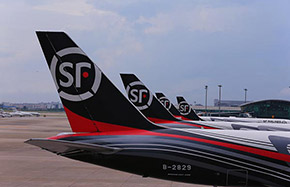Detailed plans for four FTZs announced
With the aim of deepening its reform and opening up strategy, China announced detailed plans for pilot free trade zones in Tianjin, Guangdong and Fujian, as well as a new developing plan for the existing China (Shanghai) Pilot Free Trade Zone on Monday.
Eager to further enhance the country's economic growth, the Ministry of Commerce, the four provincial and municipal governments, and other government agencies worked out plans for the four pilot free trade zones which were approved by the central government.
To further open up China to trade, the central government has made public a negative list for foreign investment applicable in the four PFTZs, a list in which restrictive items have been cut to 122 from 139 since the 2014 negative list which applied to the Shanghai PFTZ, an indication that there will be greater openness and transparency in all the PFTZs.
Background information of China's Free Trade Zone
China officially launched the China (Shanghai) Pilot Free Trade Zone on Sept 29, 2013 to explore new ways for the nation to open up, to transform government functions and promote economic restructuring.
A Free Trade Zone (FTZ) refers to an area within which goods can be imported, processed and re-exported without the intervention of customs authorities.
As of its first birthday, the Shanghai FTZ had seen 12,000 registered enterprises and $121.7 billion in foreign trade.
Functions of the FTZ involve interest rate liberalization, currency free exchange, a liberalized finance industry, financial service innovations and other offshore financial services.
The negative list is an innovative management approach introduced in the Shanghai FTZ. It regulates what not to do, rather than what to do for foreign investments in this zone.
The negative list categorizes 18 main sectors of the national economy, such as manufacturing, transportation, IT and finance, and further subdivides them into 1,067 subcategories.
The negative list has had 110 restrictive clauses and 29 prohibitive ones as of Dec, 2014.
The Shanghai FTZ first covered an area of 28.78 square kilometers and consists of four bonded zones, including Waigaoqiao Free Trade Zone, Waigaoqiao Free Trade Logistics Park, Yangshan Free Trade Port Area and Pudong Airport Comprehensive Free Trade Zone.

















